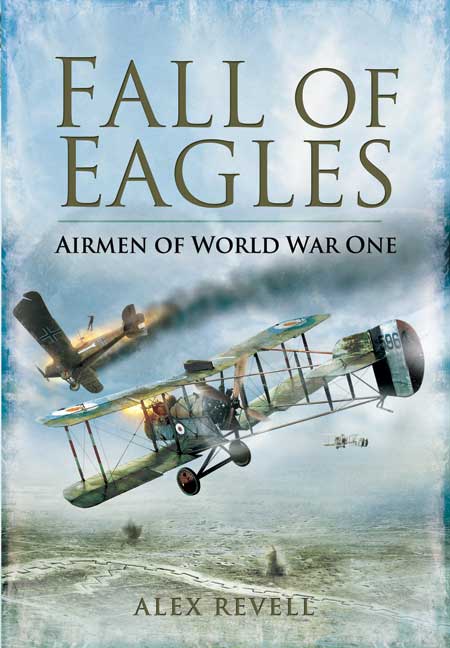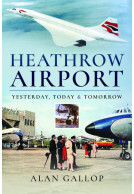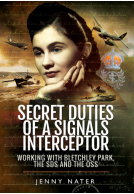Fall of Eagles (Hardback)
Airmen of World War One
Imprint: Pen & Sword Aviation
Pages: 256
ISBN: 9781848845275
Published: 4th July 2011
(click here for international delivery rates)
Order within the next 5 hours, 8 minutes to get your order processed the next working day!
Need a currency converter? Check XE.com for live rates
| Other formats available - Buy the Hardback and get the eBook for free! | Price |
|---|---|
| Fall of Eagles ePub (7.6 MB) Add to Basket | £4.99 |
The Great War of 1914-1918 saw the rapid development of the aeroplane as a weapon of war. Initially its role was seen as that of reconnaissance, an extension of the cavalry, but as the war stagnated into static trench warfare, with each side facing each other across No-Man's-Land, the use of artillery, both in shelling enemy positions and counter-shelling his artillery, also became of prime importance. With the early development of radio communication between ground and air, aeroplanes also undertook the task of 'spotting' for the artillery, and it soon became apparent that these aeroplanes – both the reconnaissance machines and those working for the artillery – could not be allowed to work unmolested, and fast fighter aeroplanes - both single and two seat – began to make their appearance over the Western Front.
Technical development was rapid. The mostly unarmed reconnaissance aeroplanes, and the early fighters of 1915 and 1916, armed with a single machine gun, had given way to fighters carrying two guns, flying at altitudes of over 16,000 feet and at treble the speed of the predecessors of 1914.
With these developments a new type of soldier had evolved: the fighter pilot. Capable of fighting in the air, in three dimensions and at great speed, individual pilots began to emerge whose singular talents and temperament brought them to the forefront of their respective air forces. They became the 'aces', pilots who had brought down five or more of the enemy. Despite their expertise, few of these 'aces' survived the war. The last combats of some are known and well documented, others are obscure. Some of the pilots in these pages are well-known, others less so, but all shared the common experience of fighting in the air during the war of 1914-1918: the conflict which saw the aeroplane evolve from a relatively fragile, unarmed reconnaissance machine, to a deadly weapon that changed the face of war for ever.
An enjoyable read.
The Long, Long Trail
As World War I developed into what is now called “The Great War,” so too did the newly invented airplane develop from a reconnaissance machine for gathering information into a great and deadly fighting machine that changed the face of war forever.
Indy Squadron Dispatch
A new breed of soldier emerged, the air ‘ace.’ Manfred von Richthofen, Josef Kiss, Eddie Richenbacker, Werner Voss, Rene Fonck and William Bishop were just a few of the many ‘aces’ that downed five or more enemy aircraft – and the most renowned sent down dozens. Their skills and natural talents earned them great recognition and fear among their fellow pilots and adversaries.
There was much honor and respect in the way these men fought. As Lieutenant D. G. ‘Tommy’ Lewis tells of his encounter after being shot down by none other than “The Baron” himself, ‘Richhtofen came down to within 200 feet and waved at me. Although I foolishly imagined at first that he was going to make sure of me, I returned his greeting. I was told that I was to see and talk to him that evening, but did not have the honor of meeting him. I was, of course, a prisoner for the rest of the war.’
Manfred von Richthofen was never to have the opportunity to visit his eightieth victim. He had only another sixteen hours to live.
The members of 56 Squadron tell about another great German pilot who ‘had flown and fought so magnificently’ in his final battle. Chapter 10, “Werner Voss,” tells of his amazing flying maneuvers against all odds. Werner Voss, who was a good friend of and greatly admired by Richthofen himself, seemed to make the airplane a part of himself. Captain Bowman’s remembrance of the battle he encountered with Voss and his great admiration for his foe really tells of the honor and chivalry with which they fought and flew.
Author Alex Revell has had a great passion for aviation since his early childhood. He began seriously researching World War I aircraft and personnel in the 1960’s. He interviewed many RFC / RAF / RNAS pilots who became his personal friends. He has had numerous aviation articles published along with several books. He is a founding member of the First World War Aviation Historical Society. One reviewer wrote of Revell’s highly acclaimed book “High in The Empty Blue”, ‘A classic. I suspect that this will be the best book I will ever get to review.’ High praise indeed.
I share that passion for aviation but much about World War I in the air is new to me. With my limited knowledge of Great War aircraft and history, I found myself completely immersed in the stories these brave airmen had to tell.
My experiences with Dawn Patrolâ have taught me so much about the magnificent aircraft of the First World War. This book, and the stories these ‘aces’ had to tell, tie it all together for me and leave me with a great deal of respect and admiration for these great men. They were the legendary “knights of the air.” Their legacies will not be forgotten as long as we remember their contributions and sacrifices.
This is an excellent book that tells the stories of many great airmen of the first World War. It includes a bibliography, as well as 32 pages of outstanding photos that add greatly to the interesting stories.
During the 1914-18 war, airplanes developed rapidly as a weapon. Until then, no one had really considered how it could be used on the battlefield. Airplanes had been a novelty,
www.monstersandcritics.com
something that was developing so fast people had not had time to consider the many ways they could be used. With the outbreak of war, attention quickly became focused on the possibilities
offered by airplanes. Initially used for reconnaissance, it soon became obvious that they
could become fighters and bombers. This book charts the development of aircraft during wartime
- along with the new role of fighter pilot. It looks at the fighter aces, their battles and
often how they were making up new skills on the spot. Who were these pilots? What were their
characteristics? Why were some more successful than others? An interesting book which focuses
on a little known aspect of the First World War. It will be of great interest to anyone keen on
military history, or the history of flight. Well written, and containing lots of thorough
research, it is a book worth reading. 3 stars.
Beautifully written and illustrated, with many references to log books, war diaries and letters home. For those like me who enjoy the human side of the War, this book is a must.
Cross & Cockade International - Winter 2011
A welcome reminder that nothing will ever replace the relaxing enjoyment of a good, old-fashioned storytelling. Buy this book. You wont be able to put it down.
Indy Squadron - Nov 2011
















